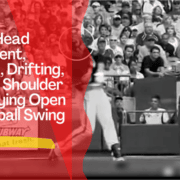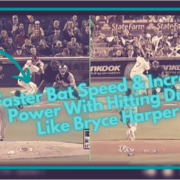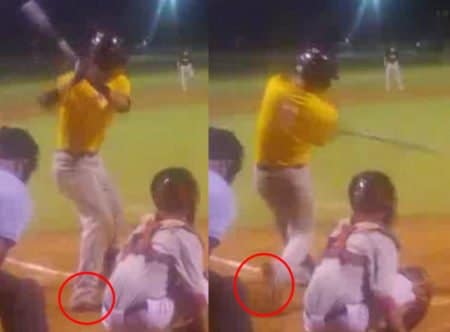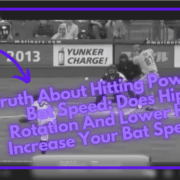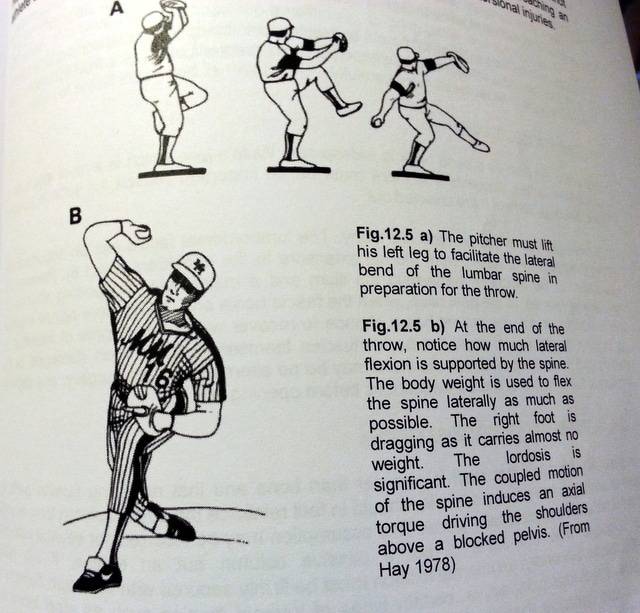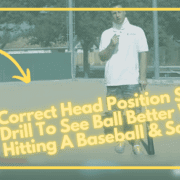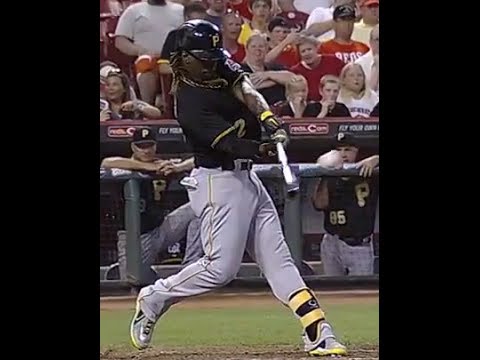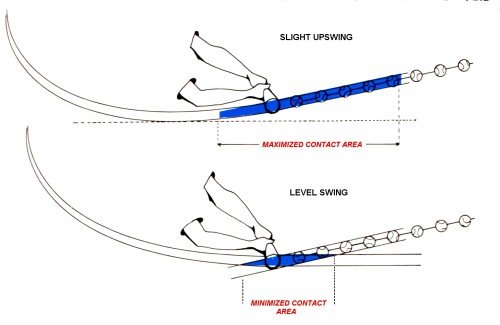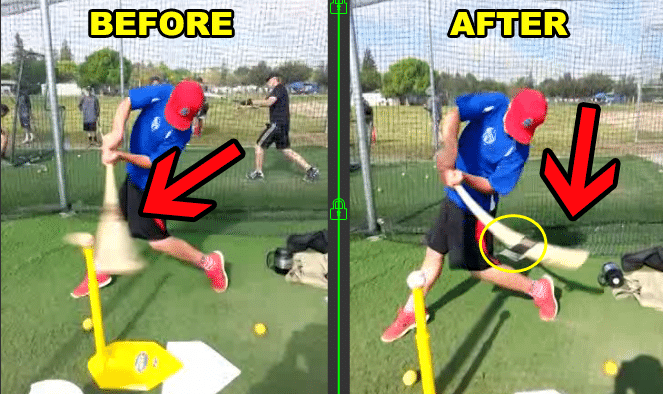Learn how to increase your hitter’s bat speed, hitting power, and hit the baseball or softball harder every time like Javier Baez in this swing breakdown…
Javier Baez Swing Analysis: Why Inward Turn Of Hips Is Wasted Movement
Hey, what’s going on it’s Joey Myers from the Hitting Performance Lab, and in this Javier Baez swing analysis, we will cover:
- Fangraphs metrics,
- Over-rotation of low half during pre-loading phase,
- Amazing C/T spine mobility (neck pressure), and
- Barrel tilt…
Here’s the transcription from the above video…
SCIENCE-BASED TRAINING:
Improve your hitting strategy dramatically by applying human movement principles.
Learn not only how and what to train but also the science behind the methods.
Javier Baez Swing Analysis FanGraph Metrics
Let’s get into the fan graph metrics. As you can see here, look at the six foot, hundred ninety-pound Javier Baez in the swing analysis we’ll be looking at in 2019. You can see his line right here. You can see a .281 batting average, 38 doubles, four triples, 29 homers, and you see a big giant balloon over here, one hundred fifty-six strikeouts and only twenty-eight walks.
Now, if we look at his line when it comes to ground ball, fly ball, line drive percentages, and his fly ball home run ratio and his pull and hard contact numbers, we look at his line drive rate being eighteen point one. You can see his averages over the amount of years he’s been in the Bigs is 19. So, a little bit down from his average.
You can see his ground ball percentage was up quite a bit, fifty point three, which was down in prior years as low as 44 percent and 37.3 percent.
You can see the average line drive rate is 20 percent or so. So as long as they’re around 18 to 22 percent, that tend to be about league average. The ground ball percentage, league average is about 43 percent or around 40 percent. You can see he’s well above average on the ground ball percentage and fly ball percentage typically floats around 37, 38 percent at league average.
So you can see he’s below well below average when it comes to the fly ball percentage homerun to fly ball ratio, the percentage at 24.4, league average is around 9 to 11 percent. So, if he gets the ball in the air or his fly balls, the percentages of his fly balls going out are almost 25 percent.
What’s also interesting to note is if you look over at his soft percentage contact medium and his hard contact percentages, you can see that his medium actually outweighs his hard percentage contact. Some interesting things going on from this Javier Baez swing analysis, might shed a little bit of light on that.
But I thought interesting to note that his hard ball contact percentage at 37.4, you can’t see it on the screen, hard contact percentage. And then you can see as medium here is 44.6.
Over-Rotation of Lower Half During Pre-Loading Phase
All right. Let’s get into the Javier Baez swing analysis, and the breakdown of his mechanics. Let’s give this a little context. This is a two thousand nineteen swing, I think, in May or so. And this pitch looks like a ninety-one mile an hour slider that ends up, as you can see in the K zone in that lower outside quadrant. And he hits this one out to right center a little bit more towards center but right center.
One thing I want you to take a look at is over rotation of the lower half. This is something I think Ted Williams said in The Science of Hitting. And a lot of instructors out there will take this to the extreme. And they think that by turning the pelvis in towards the catcher, so imagine a hitter’s belt buckle turning in to face the catcher. Like there was a flashlight coming out of the belt buckle and that you’re shining the flashlight at the catcher to get the hips some momentum.
Now, I think this is wasted movement when it comes to function of the spinal engine. Not my opinion, but if we look at springy fascia, the spinal engine, what we want is we want to see this front shoulder … we’ll get a chest view here in a second … we want to get this front shoulder to go down in and towards the back hip. And we want this back shoulder to move away from this front hip.
When you move the pelvis in or you move the front hip bone in along with the shoulder, is that now the hip and the shoulder are chasing each other instead of doing the opposite in what we would find in a wringing towel type of scenario, whereas one hand being the shoulder, the other hand being the pelvis.
We’re seeing a lot of these coaches that will say if and when the pitcher shows you his back back pocket, then you show them yours. This is clearly what Javier Baez is doing in this swing analysis. You can see him really showing his back pocket versus this neutral position that he starts off in, really rolls in with that hip.
Now, if we take a look at another hitter, Khris Davis of the A’s, this is the 2018 swing of his. But he actually steps in the bucket a little bit. You’re going to see a little difference to the hip positioning. Khris Davis really doesn’t waste any motion pulling that belt buckle, this flashlight on the belt buckle, trying to shine it in the catcher’s eyes. He actually keeps it in a neutral position and steps out. Into the bucket.
What both of these players do really well, and I think, Khris actually does better than Baez is because of the lower half over rotation in the pre loading phase of the swing before stride touchdown, we see Khris will keep his hips in a neutral position … but will use this neck tension, which we’ll talk about here in a second to counteract. And he’s really good, Khris, at going the other way, where he hits this one. This is a 94 mile an hour fastball somewhat up in the zone. And he hits this to straight away center.
He does very well going to the opposite field, even though he’s stepping out now, I wouldn’t advise young hitters to do that. And we have a stride drill that fixes getting the stride more in line.
Khris makes this work because of the way he uses his spine. Here’s a chest view of Javier Baez swing analysis, it’s a little angled here, but you can see that kind of over rotation pre loading phase of the pelvis, the lower half versus what Khris Davis was doing.
You can see him really coiling up with the lower half, which he really doesn’t have to. And you’re seeing the what I was talking about is taking this front shoulder down and in towards a back hip and we should actually see this front hip move away from the back shoulder.
When you bring that front hip in, you’re chasing the back shoulder instead of moving away from it, which that’s how springy fascia works, how we load the body like a spring or a catapult. And we want to bring that front shoulder down and in which he is doing. But when you turn the pelvis, it’s almost like the corresponding shoulder is chasing the corresponding diagonal hip bone.
Now, if we look at Khris Davis on the same swing, you know, this view’s a little bit more chest view than the angled version we’re getting with Javier Baez. But you can see that that hip stays in neutral and then you’ll see him bring his front shoulder down and in towards the back hip and you’ll see this front hip move away from the back shoulder.
Some people might call this the scap load that is covering this line here, this diagonal line to scap load. But we also that’s a retraction of the back scap. What we should see is a protraction of the front scap or the front shoulder moving down and in. So, we’re going to see the hitter’s numbers when the hitter does that. We should see both moves, not just one. And you’re seeing Khris Davis do this very well because he keeps his pelvis in neutral.
You can see here and just lets his upper half preload and let his lower half just do what it does and let it open as it does to take the rest of the slack out of the spinal engine.
And one more quick thing before we move on from this in this Javier Baez swing analysis … as you can see, as he coils up him in Davis, pretty much end up in the same spot, at landing. Look at where his pelvis is at landing. So, it’s almost like he gets a running start with his pelvis. I don’t think it really relevant because we’re getting the same effect with the bounce effect with Davis as we are with Baez. It’s just I think Baez’s closing himself off more. And I wouldn’t teach this to young hitters.
I wouldn’t over rotate the pelvis or turn the pelvis inward towards the catcher to landing, because at landing, you see he’s in the same position. And as long as he’s getting his neck pressure, which will be transitioning to here, as long as you get into neck pressure, he’ll be wound up top. And then once the lower half starts to open, as he starts to swing that rest of that slack, will get taken out and then everything will go as it’s supposed to.
Amazing C/T Spine Mobility (neck pressure)
Now, let’s talk about creating neck pressure. The idea of this is like wringing a towel out except for one hand represents the head, the other hand represents the shoulder. So, the hand’s turn in opposite directions. And what we’re trying to do is it’s not so much about how much of the numbers the hitter shows, although Javier Baez in the swing analysis, you can see you can see everything. If he had a triple digit number, you could see three digits on his back. You can see his back elbow. You can see all the way across the shoulders. If he had a 20-word last name, you could see it from armpit to armpit. You can see pretty much everything, almost his rear oblique. You can see because he’s shown his numbers so much.
Whereas we look at a Khris Davis on this one. Similar, but not quite as turned in because he’s not turning the pelvis in. He doesn’t have to. He can create this Catapult Loading System just by keeping the pelvis in neutral and let the pelvis open when it does. He needs to create that bounce with the lower half, create that neck pressure up top.
You can see that he’s locked in, his head is anchoring a tracking position so he can track the ball and keep vision on the ball. It’s not this idea of what some of these coaches call “false separation”, which when these coaches show on video, what false separation is there over rotating the upper half. Now, we don’t want to over rotate. We can’t lose sight with the back eye. And that’s not Davis here. Maybe he is. He is clearly along with Baez. They are clearly showing their numbers, showing their last name. You can see that is clear as day.
There is a pro attraction of the front scap. There’s a retraction to the back scap. You’re seeing both of those things happen in two different hitters on two different teams. And what both of them do are doing and having common is they are wringing the towel out head and shoulders. The head creates an anchor point. Their shoulders rotate under the chin as far as they can while creating this neck pressure in the T1 (Thoracic section of spine, vertebrae-1) and C7 (Cervical section of spine, vertebrae-7) area.
So there’s like a two, three-inch area that if the hitter does this right, they create that pressure there with the head anchored with the shoulder pulled under as far as it can do. And they’ll feel this pressure up until the turn and they can go from there. That’s taking slack out of this system early. If this doesn’t happen, there is going to be compensation somehow in that there may be a front shoulder pulling out early. There might be a barrel that’s dumping deep and early into the zone to try and hurry up, get the barrel to the ball.
But above all, hitters must, even hitters as young as eight, nine, 10 years old need to feel that pressure if there is going to be power the minute that pressure is taken off between the head and the shoulders, that is when we’ll be letting air out of the balloon.
The reason that I’ve moved to more of a neck pressure, creating neck pressure versus showing numbers is that every hitter is going to be different when it comes to their mobility in their neck and their thoracic spine or their shoulders being able to turn the head this much as much as Baez or Davis. Davis isn’t quite as much there. Maybe it’s just with Baez because he’s inward rotating his lower half. It’s allowing him to turn more.
I think that again, hinders it can take our vision and tracking off the ball if we do this with younger hitters, what Baez is doing. So, I would recommend more of what Davis is doing, albeit without the stepping out part of it. But we want to create the neck pressure. That is the rule. That is the principle, the movement principle, the wringing towel principle to the Catapult Loading System in spinal engine, springy fascia.
It is not so much to show both numbers. The numbers will probably show, but it will depend on the hitter’s mobility in their neck. So, every hitter might be different.
Barrel Tilt
One last thing in this Javier Baez swing analysis is the barrel tilt. There are some coaches out there that like this barrel till where you can see where Baez tilts the barrel towards the opposing batter’s box or kind of off towards first base and to get the barrel momentum going into the swing.
Now, this might be something that Baez needs to do because he is rotating that lower half inward towards the catcher. And to get some barrel momentum is going to help him to get around, especially on pitches in pitches up in the zone.
I don’t teach this per se. I don’t think it’s a bad or good thing it can be a bad thing. If they tilt too much and I think Baez in the past has tilted too much and it’s got him in trouble, it causes more of an uppercut type of swing. I’ve had hitters that do this and they hit the ball in the air more often than the hitter that doesn’t tilt the barrel this much.
We’ve seen Donaldson from I think it was 2013 to 14. He was tilting too much and we saw his fly ball percentage go up and his batting average go down. So, I would not really mess with this too much as long as we are creating that wringing towel effect between the head and the shoulders, creating the neck pressure.
And we are what I like to tell my hitters is to act like there’s a skewer going through their hip bones that is keeping him on a straight line, keeping hip bones on a straight line towards the catcher. And they just slide along that skewer until the front foot hits the ground and they can turn out of it, but they can’t turn into the skewer up until landing … has to stay in a neutral position and they manipulate the neck pressure at the top to create the tension that we need to be able to instantaneously swing the bat and increase our ball exit speeds.
The barrel tilt is just not something that I would teach my hitters. I would let my hitters do it. But if it’s affecting their fly ball, line drive, ground-ball ratios and we would definitely change it. Now, I hope you like this Javier Baez swing analysis. Make sure that you’re swinging smarter by moving better.
And before I let you go…






